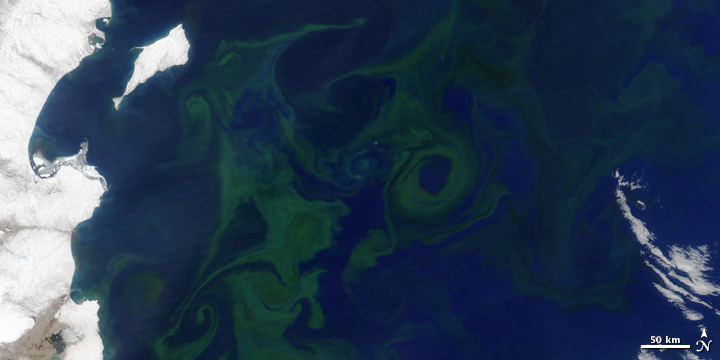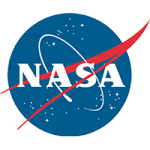The 2015 OCB Summer Science Workshop was held July 20-23, 2015 at the Woods Hole Oceanographic Institution’s Quissett Campus (Clark 507) in Woods Hole, Massachusetts. View the social media activity for this meeting at #OCB2015!
1. Plenary Sessions
Monday, July 20, 2015
Atmospheric Nutrient Deposition: Impacts on Marine Ecosystems and Biogeochemical Cycles

Law et al., 2013. http://dx.doi.org/10.1071/EN12159
Atmospheric deposition from natural (e.g., dust) and anthropogenic (e.g., ship plumes) sources represents an increasingly important source of new nutrients for many regions of the world’s oceans. However, links between atmospheric nutrient deposition, ocean productivity, and feedbacks to climate remain poorly understood. This joint OCB-SOLAS (Surface Ocean Lower Atmosphere Study) session included an overview of natural and anthropogenic sources of atmospheric nutrients and their associated spatial and temporal scales of impact. Other topics of discussion included atmospheric transport and mixing, wet and dry deposition processes, and the impacts of these new nutrients on marine biogeochemistry and ecosystems (stoichiometry, CO2 system, bioavailability, biodiversity), as well as potential feedbacks to the atmosphere and climate.
Tuesday, July 21, 2015
Studying Spatial and Temporal Variability in the Ocean with Shipboard and Autonomous Platforms

Image courtesy of SOEST
This session provided a forum for studies across the globe that exemplify successful combinations of shipboard time-series coupled with autonomous observations. Speakers in this session highlighted scientific insights based on these integrated observing strategies. This session is timely, as the development and capabilities of autonomous biogeochemical sensors are progressing rapidly. As more biogeochemical sensors become available, shipboard observations will be essential for sensor testing, calibration, and validation. Likewise, shipboard platforms are relatively limited in their spatiotemporal footprint, so autonomous measurements can provide the opportunity to enhance our understanding of marine biogeochemical and ecosystem processes across a wider range of spatial and temporal scales.
Wednesday, July 22, 2015
Evolving Views on Physical, Ecological, and Biogeochemical Underpinnings of Plankton Blooms

Image (based on MODIS data) of a plankton bloom near Kamchatka, AK on June 2, 2010 (courtesy of NASA).
The dynamics underlying the formation, maintenance, and demise of plankton blooms have been studied for a century now; however, the application of new technologies and approaches is redefining our understanding of the physical, biogeochemical, and ecological underpinnings of plankton blooms in the open sea. Remote and autonomous sensing technologies, new shipboard observations, and ocean modeling studies all continue to improve our quantitative and conceptual understanding of the significance of blooms for ocean biogeochemistry and food web interactions. This session explored current approaches to understanding processes triggering the formation and maintenance of phytoplankton and zooplankton blooms, examine the fate of this biomass, and highlight gaps in our understanding of these dynamics.
2. Agenda with Talks and Webcast Footage
Monday, July 20, 2015
- Craig Carlson (Univ. California, Santa Barbara), (Recording: Quicktime, webm)
- Heather Benway (Woods Hole Oceanographic Inst.) (Recording: Quicktime, webm)
- Anastasia Romanou, Preview of Pre-Decadal Workshop (Recording: Quicktime, webm)
Plenary Session 1. Atmospheric Nutrient Deposition: Impacts on Marine Ecosystems and Biogeochemical Cycles
Chair: Scott Doney (Woods Hole Oceanographic Inst.)
8:45 Overview of nutrient emissions sources and scales of impact (Scott Doney, WHOI and Philip Boyd, Univ. Tasmania) (Recording: Quicktime, webm)
9:15 Global oceanic emission of ammonia: Constraints from seawater and atmospheric observations (Fabien Paulot, NOAA Geophysical Fluid Dynamics Laboratory/Princeton Univ.) (Recording: Quicktime, webm)
9:45 Stable isotopes as tracers of anthropogenic nitrogen sources, deposition, and impacts (Meredith Hastings, Brown Univ.) (Recording: Quicktime, webm)
10:15 Deposition of Atmospheric Nitrogen to Coastal Ecosystems (DANCE): a study in seasonally oligotrophic waters off the eastern U.S. (Ray Najjar, Penn State Univ.) (Recording: Quicktime, webm)
11:00 Impacts of atmospheric nutrient deposition (N, P, Fe) on marine productivity and the CO2 system (J. Keith Moore, Univ. California, Irvine) (Recording: Quicktime, webm)
11:30 Atmospheric and marine controls on aerosol iron solubility and bioavailability in seawater (Alex Baker, UEA) (Recording: Quicktime, webm)
12:00 Aerosols and trace metal toxicity (Adina Paytan, UCSC) (Recording: Quicktime, webm)
Question and Group Discussion (Audio recording)
12:30 Group discussion on potential SOLAS-OCB partnering opportunities
12:45 Networking Lunch
2:15 Agency updates
- Rick Murray (NSF Division of Ocean Sciences) (Slides; recording: Quicktime, webm)
- Simone Metz (NSF Chemical Oceanography) (Recording: Quicktime, webm)
- David Garrison and Michael Sieracki (NSF Biological Oceanography) (Recording: Quicktime, webm)
- Paula Bontempi (NASA Ocean Biology and Biogeochemistry) (Recording: Quicktime, webm)
- Kathy Tedesco (NOAA Climate Program Office) (Slides; audio recording)
4:15 Student presentations (Combined slides)
- Introduction (Benway), De Martini, Filliger (audio only),
- Filliger, Bachman, Binetti, Carranza, Chu, De Martini, Feeman (Recording: Quicktime, webm)
- Laperriere, Liu (Recording: Quicktime, webm)
- Manning, Marki (Recording: Quicktime, webm)
- Palevsky, Preischel (Audio recording)
5:45-7:30 Poster session and welcome reception
Tuesday, July 21, 2015
Plenary Session 2. Studying Spatial and Temporal Variability in the Ocean with Shipboard and Autonomous Platforms
Chairs: Susanne Neuer (Arizona State Univ.), Michael Lomas (Bigelow Laboratory), Angelicque White (Oregon State Univ.) (Recording: Quicktime, webm)
8:15 Introduction: OCB Ocean Time-series Committee and activities (Susanne Neuer, Arizona State Univ.)
Part 1. Overview Talks
8:30 Observing climate change trends in ocean biogeochemistry: When and where (Stephanie Henson, National Oceanography Centre) (Recording: Quicktime, webm)
9:05 How do autonomous assets expand the temporal and spatial footprint of a time-series station? (Matthew Church, Univ. Hawaii) (Recording: Quicktime, webm)
9:40 How do autonomous assets expand the temporal and spatial footprint of a shipboard process study? (Mary Jane Perry, Univ. Maine) (Recording: Quicktime, webm)
10:45 Community discussion on integrated ocean observing strategies: Science questions and leveraging opportunities (Moderated by Debbie Bronk, Virginia Inst. Marine Science) (Recording: Quicktime, webm)
Part 2. Scientific Highlights from Integrated Measurement Approaches
OPEN OCEAN
11:30 Bermuda Atlantic Time-series Study (BATS) (Nicholas Bates, Bermuda Institute of Ocean Sciences, talk given by Michael Lomas, Bigelow Laboratory) (Audio recording)
11:50 A combination of measurement strategies elucidates rare events along Line P (Roberta Hamme, Univ. Victoria) (Recording [first part Audio only – video begins at 2:25]: Quicktime, webm)
12:10 A multi-platform approach to investigate hidden biogeochemical processes off West Africa (Björn Fiedler, University of Kiel/GEOMAR) (Recording: Quicktime, webm)
12:45 Informal lunch gathering of OCB leadership with students and postdocs
COASTAL OCEAN
2:00 From the past to the future: Understanding ocean and climate variability through the CARIACO Ocean Time-Series (Laura Lorenzoni, Univ. South Florida) (Recording: Quicktime, webm)
2:20 Integration of measurement methods in the California Current Ecosystem(Mark Ohman, Scripps Inst. Oceanography) (Recording: Quicktime, webm)
2:40 Gulf of Maine North Atlantic Time-Series (GNATS)(Barney Balch, Bigelow Laboratory) (Recording: Quicktime, webm)
HIGH LATITUDE OCEAN
3:00 Southern Ocean Carbon and Climate Observations and Modeling project (SOCCOM) (Jorge Sarmiento, Princeton Univ.) (Recording: Quicktime, webm)
3:20 Marginal Ice Zone Program (Craig Lee, Univ. Washington) (Recording: Quicktime, webm)
3:40 Palmer LTER (Oscar Schofield, Rutgers Univ.) (Recording: Quicktime, webm)
Part 3. Comparative Efforts and Policy Applications
4:20 Ecology and Biodiversity: International Group for Marine Ecological Time-Series (IGMETS) (Peter Wiebe, Woods Hole Oceanographic Inst.) (Recording: Quicktime, webm)
4:40 Floats and boats: Rectifying productivity results across methods, space, and time (Laurie Juranek, Oregon State Univ.) (Recording: Quicktime, webm)
5:00 Translating insights from observatories to policy (Luis Valdes, Intergovernmental Oceanographic Commission (IOC) (Recording: Quicktime, webm)
5:20 Poster session
7:00-8:30 Workshop Dinner
Wednesday, July 22, 2015
Plenary Session 3. Evolving Views on Physical, Ecological, and Biogeochemical Underpinnings of Plankton Blooms
Chairs: Matthew Church (Univ. Hawaii), Hugh Ducklow (Lamont-Doherty Earth Observatory, Columbia Univ.)
Part 1. Overview of Habitat Conditions that Promote Blooms
8:30 Overview of blooms: Properties and mechanisms (Michael Behrenfeld, Oregon State Univ.) (Recording: Quicktime, webm)
9:05 Stratification, turbulence, and mixing (Andrew “Drew” Lucas, Scripps Inst. Oceanography) (Recording: Quicktime, webm)
9:40 Mesoscale and submesoscale bloom dynamics (Raffaele Ferrari, Massachusetts Inst. Technology) (Recording: Quicktime, webm)
Part 2. Types and Detection of Blooms
10:45 Biogeochemistry of coccolithophore blooms (Barney Balch, Bigelow Laboratory) (Recording: Quicktime, webm)
11:20 Phytoplankton blooms in the North Pacific Subtropical Gyre (Angelicque White, Oregon State Univ.) (Recording: Quicktime, webm)
11:55 Phytoplankton blooms in high latitude systems (Sam Laney, Woods Hole Oceanographic Inst.) (Recording: Quicktime, webm)
Part 3. Biogeochemistry and Ecology of Phytoplankton Blooms
1:45 Aggregation and export (George Jackson, Texas A&M Univ.) (Recording: Quicktime, webm)
2:20 Phytoplankton-nutrient interactions (Raphael Kudela, Univ. California, Santa Cruz) (Recording: Quicktime, webm)
2:55 Chess not checkers: Phytoplankton bloom effects and predation (Susanne Menden-Deuer, Univ. Rhode Island) (Recording: Quicktime, webm)
Part 4. Bloom-Induced Changes in Plankton Ecology
4:00 Revisiting Stommel to assess spatiotemporal scales of gelatinous zooplankton populations and their roles in biogeochemical cycles (Rob Condon, Univ. North Carolina, Wilmington) (Recording: Quicktime, webm)
4:35 Bacterial response to blooms (Alison Buchan, Univ. Tennessee, Knoxville) (Recording: Quicktime, webm)
5:10-6:45 Poster session
5:15-7:00 Program managers research funding panel discussion (students and postdocs only)
Thursday, July 23, 2015
Internal Cycling of Trace Elements: A Budding GEOTRACES/OCB Collaboration
8:30 A GEOTRACES/OCB collaborative workshop (Bob Anderson, Lamont-Doherty Earth Observatory, Columbia Univ.) (Recording: Quicktime, webm)
8:45 Questions and community discussion
Community Updates and Activities
9:15 International Ocean Carbon Coordination Project (IOCCP) Update (Laura Lorenzoni, Univ. South Florida) – including summary of international biogeochemical sensors course (Recording: Quicktime, webm)
9:30 IMBER and Future Earth (Eileen Hofmann, Old Dominion Univ.) (Recording: Quicktime, webm)
9:45 Ocean Observatories Initiative (Oscar Schofield, Rutgers Univ.) (15 min update followed by 15 min Q&A) (Audio recording, discussion: Quicktime, webm)
10:45 Report of US CLIVAR/OCB Joint workshop and Working Groups (Joellen Russell, Univ. Arizona, remote presentation by Igor Kamenkovich) (Recording: Quicktime, webm)
11:00 Coastal CARbon Synthesis (CCARS) Science Plan (Galen McKinley, Univ. Wisconsin, Madison) (Recording: Quicktime, webm)
11:15 Arctic-COLORS (Arctic-COastal Land Ocean inteRactions) Science Plan (Paty Matrai, Bigelow Laboratory given by Maria Tzortziou, City University of New York) (Recording: Quicktime, webm)
11:30 Closing remarks (Craig Carlson, Univ. California, Santa Barbara) (Recording: Quicktime, webm)
Ocean Biology and Biogeochemistry Pre-Decadal Survey Meeting (Carriage House)
The next Decadal Survey for Earth Science, due out in 2017, will establish the observational needs and priorities for NASA, USGS and NOAA and will help guide the development of future space-based missions. There are several pre-DS reports in preparation or completed by communities in terrestrial ecology, carbon cycle, water cycle, land use, and biodiversity. Starting with this planning meeting at the 2015 OCB summer workshop, NASA and OCB initiated the development of a pre-Decadal Survey report on behalf of the ocean biology and biogeochemistry community. In this report, we identify the most pressing science questions, including uncertainties and gaps in our understanding of carbon-climate-ecosystem feedbacks, coastal processes and ecosystems, sub-mesoscale processes, acidification, fisheries, and higher-trophic level interactions. The NASA Ocean Biology and Biogeochemistry (OBB) planning process began by revisiting the science, technology, modeling, and instrument/mission needs of the OBB program outlined in the 2007 OBB Advanced Science Plan and progress made since then. It is critical to engage the marine ecosystem and biogeochemistry research communities in this process to ensure that the most pressing science questions are put forth in the next DS. This brief meeting immediately following the close of the OCB workshop included five short plenary talks spanning the breadth of OBB science, followed by a community planning discussion.
First drafts of the OBB pre-DS report and the Advanced Plan were presented in a Town Hall meeting at the 2015 Fall AGU Meeting for community feedback. The revised drafts were presented at the February 2016 Ocean Sciences Meeting and in March 2016 to the broader community and the public. Both drafts were finalized by the end of April 2016.
12:30-1:30 Plenary talks
- Paula Bontempi “The NASA Decadal Survey and the OBB Advance Plan”
- Dave Schimel “Carbon-Climate Feedbacks”
- Scott Doney “OCB science directions”
- Heidi Dierssen “Looking backwards to look forwards: advancements since the 2007 planning effort”
- Anastasia Romanou “Planning a pre-decadal survey/AP report”
1:30-2:30 Open discussion, Q&A
2:30-3:00 Break
3:00-4:00 Open discussion
4:30-6:30 Ocean Carbon & Biogeochemistry Scientific Steering Committee Meeting
3. Poster Information
2015 OCB Workshop Poster List
2015 OCB Workshop Full Abstracts
4. Participant Information
2015 OCB Workshop Participant List
2015 Workshop Sponsors





